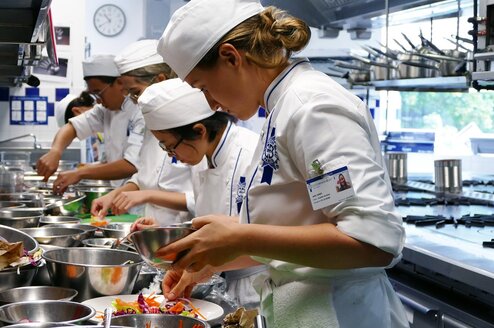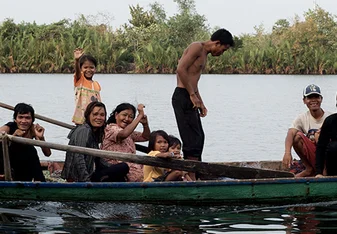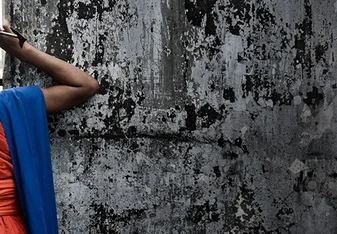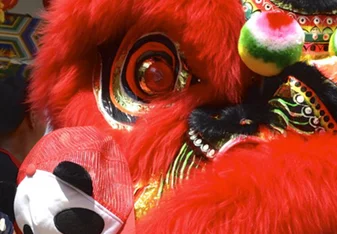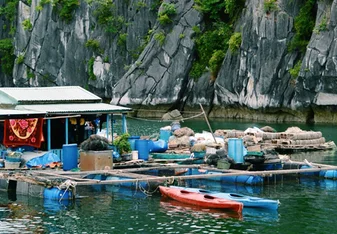Gap Year in the Philippines
Gap Year Programs in the Philippines
About
Comprised of 7,000 islands just south of Taiwan, the Philippines is a diverse country with influences of Spanish, American, and Japanese culture. As an up-and-coming tourist destination, the country welcomes foreigners with generous hospitality. One of the official languages is English, making it a great starting point for those hesitant to step into the hectic world that is much of Asia. As a gapper, you can explore the country in a variety of ways: adventure travel, volunteering, interning and even human rights campaigns. Or you can combine several opportunities to gain a well-rounded gap year in this beautiful island-nation.
Types of Programs
Volunteering
The Philippines offers a wide variety of ways to volunteer throughout the country. Like many countries in Southeast Asia, teaching is the most popular opportunity. Because English is one of the official languages of the country, most volunteers help teaching more subject-specific classes, such as computer lab, math, arts, and science, though it is possible to also just teach English. Further, in the cities youth development programs are growing and in need of positive individuals to help inspire and mentor the kids.
Environmental conservation, especially of the reefs and the ancient rice terraces, is important to the future of the country, as they become a tourist hotspot. Agricultural projects can be found throughout the Philippines are they work to determine new methods of providing food for the increasing population. Volunteering in healthcare is possible, with more opportunities in rural communities than in the cities.
Adventure Travel
Do you dream of speeding along zipline or diving among exotic fish? The islands of the Philippines offer an abundance of adventure. On many of the islands you can get SCUBA-certified and explore world-class diving sites. On Coron you can even dive among World War II Japanese shipwrecks. Several spots offer the unique opportunity to swim with whale sharks. The beautiful rice terraces are ideal for trekking, with awe-inspiring views. After enjoying the outdoors, you can find a guide to take you caving and in Palawan you can take a boat ride into the world's longest underground river.
Internships
Most professional internships are based out one of the major cities: Manila, Cebu or Davao. Opportunities in business, development, finance, and health are most common. These internships take place throughout the year, though they may coincide with the Filipino school year, which differs from Western schedules. Most internships are unpaid and all professional organizations use English as the working language.
Human Rights
The Philippines has gained extensive global press recently about the human trafficking and sex tourism industries. Organizations are working to counter these mounting issues and to speak out for those without a voice. If you seek an opportunity to work as a volunteer on a major current human rights campaign, check out the Philippines. Most organizations are based in the cities, though may include travel throughout the country to assess and combat these issues.
Planning Your Trip
Cost of Living in the Philippines
The cost of living varies depending on where in the country you are located, with the metropolitan areas such as Manila being the most expensive. At the time of writing this, the exchange rate was about 41 Philippine Peso (PhP) to 1 USD. Apartments in Manila range from PhP 14,500- 32,800 ($350-800), with the average cost being about PhP 20,500 ($500) for a one-bedroom. An average meal out costs PhP75-250 ($1.75-$6.00). The majority of interns do not work while they are abroad in the Philippines, as it can be very difficult to find work.
Culture and Etiquette in the Philippines:
- Dress modestly and cover up when you are leaving the beach. Smart attire is important and Filipinos are quite well-dressed
- Business attire is conservative
- Hiya, meaning shame, dictates societal norms and relationships. Filipinos don’t want to look stupid or incompetent and therefore bring shame upon them, nor do they want to point out the mistakes of another person and bring shame upon him.
- It is expected that guests will arrive 15-30 minutes late to events, but in the professional sphere you should be prompt
- A jerk of the head down means "No". Filipinos rarely say no, and therefore the non-verbal sign for "no" can accompanied by a verbal "yes," still meaning "no."
- Never curl your finger to beckon. This is considered an insult.
Health & Safety
Health and Safety in the Philippines
As with anywhere you travel, be sure to check with both a travel clinic and your country's travel advisories for up-to-date information on health and safety precautions. Specifically:
- Parts of Mindanao and the Sulu islands dangerous and of specific concern for foreigners to travel to due to terrorist groups. Check with your state department about safety precautions before making travel plans.
- Dengue fever and malaria are both found in certain regions of the Philippines and are not prevented by vaccine. Be sure to carry bug spray and wear covering clothing. It is recommended to take malaria pills if you are traveling to a region that is endemic.
- Health facilities are substandard when compared to Western counterparts. If you need serious medical attention, you may opt to go to Singapore or Bangkok.
- Be wary of cons and make sure you keep your personal belongings securely with you, especially in Manila.
- When swimming, be careful for heavy surf and strong currents, which are often not visible. There are not lifeguards many of the beaches.



